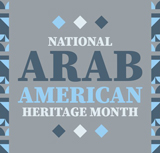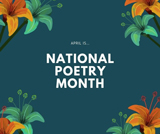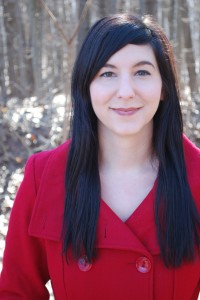 The linked stories of Melinda Moustakis's graceful debut collection, Bear Down, Bear North, are so coated in Alaskan grit, we assumed she grew up there, in a cabin with an outhouse, shooting rifles, gutting fish, sneaking cranberry lick from the kitchen cupboard. We were surprised to learn that, after spending her first five years in Fairbanks, Moustakis grew up in California, though she returned to Alaska every summer to fish with her uncle on the Kenai River.
The linked stories of Melinda Moustakis's graceful debut collection, Bear Down, Bear North, are so coated in Alaskan grit, we assumed she grew up there, in a cabin with an outhouse, shooting rifles, gutting fish, sneaking cranberry lick from the kitchen cupboard. We were surprised to learn that, after spending her first five years in Fairbanks, Moustakis grew up in California, though she returned to Alaska every summer to fish with her uncle on the Kenai River.
Moustakis was recently named one of the National Book Foundation's 5 Under 35 Fiction Writers. Bear Down, Bear North received the Flannery O'Connor award and has been praised by Jaimy Gordon, Stuart Dybek and Benjamin Percy. “Immediately I was lost in the hard poetry of the sentences,” Percy writes, “lost in the wilds of Alaska, lost under the whiskey spell of a writer who knows how to wield a knife, a rifle, a fishing reel as well as she does her sharply honed language.”
Moustakis is currently a visiting writer at Pacific Lutheran University in Tacoma, Washington. She answered a few questions for us via email.
How did you absorb so much of Alaska during your visits there—and not just postcard Alaska but the dark Alaska you portray in your stories, the Alaska where it's “f***ing February, when everyone goes crazy and shoots themselves in the head”? I grew up listening to all of these stories of my grandparents’ homestead, of my parents growing up in Alaska, of hunting and fishing. And then I started going up in the summers to go fishing, spending long periods of time basking in fishing jargon and banter and learning the ways of the river from my Uncle Sonny at a cabin without running water or electricity. I’ve always been in the midst of the local scene, visiting with family born and raised in Alaska. One of my goals for this project was to write a book that my family and then friends on the river would read and appreciate. I enjoy listening to stories, especially my uncle’s, and I really pay attention and the grit is just a part of the stories I’ve inherited.
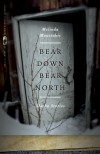 When you were writing these stories, were there things you would do to help put you back in Alaska? I would go through my pictures of Alaska, mostly my fishing pictures from the summers. I keep fishing journals when I’m up there and sometimes I would reread them to immerse myself in the setting. But the most helpful thing that put me back in Alaska was being able to recall sounds—the river, my Uncle Sonny telling stories, fishing banter. More than anything, the cadence and rhythm of dialogue sends me back to this landscape.
When you were writing these stories, were there things you would do to help put you back in Alaska? I would go through my pictures of Alaska, mostly my fishing pictures from the summers. I keep fishing journals when I’m up there and sometimes I would reread them to immerse myself in the setting. But the most helpful thing that put me back in Alaska was being able to recall sounds—the river, my Uncle Sonny telling stories, fishing banter. More than anything, the cadence and rhythm of dialogue sends me back to this landscape.
There are stories here—like the hospital mannequin covered in the fish hooks that were removed by the nurses and doctors—that have this stranger than fiction quality. Will you fess up? The eaglet stuck in the hole in the outhouse? The woman giving CPR to the moose calf? You’ve listed the some of the more true to life moments in the book, the shortest of the tall tales. I will say all three of them were based on stories my uncle told me and, to Alaskans, these types of occurrences are a part of everyday life. My job as a writer is to take these diamonds and wrap the coal, wrap the whole story around them to showcase them.
The women in Bear Down, Bear North are almost unanimously capable characters—and many of them are quite fierce, while many of the men are absent or down at the bar. Does this reflect some of the stories you were told growing up? I wanted to write a certain type of woman that I’d encountered in my life, in family and friends and teachers and colleagues. Complex, multi-faceted, women in the wilderness. Women who hunt and fish and have stories to tell.
 I read Bear Down, Bear North not too long after reading Olive Kitteridge. I liked how both of you used the linked story device to show characters from different angles at different times in their lives. Will you talk about why you wanted to tell your stories this way. Are there books you used as models? I didn’t plan for the book to turn out this way. The characters wouldn’t let go of me and I would find myself writing another story about them. So many stories ended up linking up that colleagues and friends and teachers told me I should link the whole collection together. If there was one image to describe this book, it would be a messy tangle of fishing line and hooks—blood lines and family ties. I didn’t have a model directly in mind, but I have always enjoyed work that captures a community and a place—I immediately think of Faulkner, Steinbeck and short story cycles like Sherwood Anderson’s Winesburg, Ohio. Louise Erdrich’s novels also have this cyclical, multi-generational structure. I also like to
I read Bear Down, Bear North not too long after reading Olive Kitteridge. I liked how both of you used the linked story device to show characters from different angles at different times in their lives. Will you talk about why you wanted to tell your stories this way. Are there books you used as models? I didn’t plan for the book to turn out this way. The characters wouldn’t let go of me and I would find myself writing another story about them. So many stories ended up linking up that colleagues and friends and teachers told me I should link the whole collection together. If there was one image to describe this book, it would be a messy tangle of fishing line and hooks—blood lines and family ties. I didn’t have a model directly in mind, but I have always enjoyed work that captures a community and a place—I immediately think of Faulkner, Steinbeck and short story cycles like Sherwood Anderson’s Winesburg, Ohio. Louise Erdrich’s novels also have this cyclical, multi-generational structure. I also like to  think
think
about how to use point of view. Pam Houston’s Cowboys Are My Weakness opened up a lot of possibilities in point of view for me, and she returns to the same main character at different points in her life.
In a recent NWBL interview, the poet Carl Adamshick talked about how other writers inspire him to want to “sing with the singers.” What have you read recently that makes you want to “sing with the singers.” Jaimy Gordon’s Lord of Misrule. What a gorgeous book. A thrilling feast of language. Also, Mark Richard’s House of Prayer No. 2 .
The Alaska author Debby Dahl Edwardson blogged recently that “. . . Alaskan books are still largely on the fringes of the  publishing world—voices in the wilderness, as it were, speaking of experiences as remote as the moon to mainstream readers.” And yet both of you are being recognized Monday at the National Book Awards ceremony in New York, Edwardson as one of the finalists for a National Book Award for YA, you for being one its “5 under 35” fiction writers. We also hear a lot of buzz about David Vann and Seth Kantner and Eowyn Ivey. There's definitely a regional flavor. Is this something the rest of the country is hungry for right now? I hope I get to meet Debby at the National Book Awards. It is amazing that two books about Alaska are being recognized by the NBA in the same year. I’d add Nancy Lord and Lesley Thomas to that list of Alaska authors. There does seem to be a heightened interest in Alaska right now, especially if you count the number of reality TV shows set there. But more than that, I think people will always be curious about Alaska, the far north, in the way they are curious about the deep South. Far and deep are words that indicate geographical distance and otherness, which can be real and imagined. There’s a long tradition of Southern Gothic writing—I’d even call my work Northern Gothic. I think readers are hungry for work that's about a region and is rooted in place because of this idea of community and how one manages all of these different relationships in his or her life. And if the setting is atypical in any way, there's an added draw with the potential of drama: Not only does a character have to contend with her failing marriage, but at any moment a bear could show up on her porch. Stories like these are seductive in their perceived strangeness, but hard-hitting in their surprising familiarity.
publishing world—voices in the wilderness, as it were, speaking of experiences as remote as the moon to mainstream readers.” And yet both of you are being recognized Monday at the National Book Awards ceremony in New York, Edwardson as one of the finalists for a National Book Award for YA, you for being one its “5 under 35” fiction writers. We also hear a lot of buzz about David Vann and Seth Kantner and Eowyn Ivey. There's definitely a regional flavor. Is this something the rest of the country is hungry for right now? I hope I get to meet Debby at the National Book Awards. It is amazing that two books about Alaska are being recognized by the NBA in the same year. I’d add Nancy Lord and Lesley Thomas to that list of Alaska authors. There does seem to be a heightened interest in Alaska right now, especially if you count the number of reality TV shows set there. But more than that, I think people will always be curious about Alaska, the far north, in the way they are curious about the deep South. Far and deep are words that indicate geographical distance and otherness, which can be real and imagined. There’s a long tradition of Southern Gothic writing—I’d even call my work Northern Gothic. I think readers are hungry for work that's about a region and is rooted in place because of this idea of community and how one manages all of these different relationships in his or her life. And if the setting is atypical in any way, there's an added draw with the potential of drama: Not only does a character have to contend with her failing marriage, but at any moment a bear could show up on her porch. Stories like these are seductive in their perceived strangeness, but hard-hitting in their surprising familiarity.
Given that blend of strangeness and familiarity, we're excited to hear about the dinner you'll create for your book. Will you set one up for us? I think I got a little carried away with this dinner party, which I chose as a celebration for the book. If the dinner was supposed to be with characters from the book, and food mentioned in the book, there’d have to be earthquake stew—and no one wants to eat that. So, here is my dinner party:
Location: My Uncles Sonny’s cabin on the river for summer solstice.
Appetizers: Sonny’s gravlox, Joe from Hell’s shrimp cocktail, smoked salmon dip, candied salmon, raw oysters.
Drinks: Marnie’s dirty martinis, Malbec, Chardonnay, Rosé, Belgian beer, red wine my sister makes, champagne.
Dinner: Alaskan king crab with butter, Chilean sea bass, roasted duck, asparagus with homemade hollandaise, moose tenderloin, risotto, real Caesar salad, artichoke hearts and more butter, veal veloute sauce.
Dessert: Fresh blueberry pie, whipped cream, chocolate soufflé.
Afterparty: S’mores on the campfire. Jug of cranberry lick.
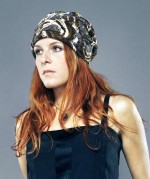 Guests: family, the river crew, all my friends from everywhere, Jaimy Gordon, Pam Houston, Bonnie Jo Campbell, Margaret Atwood, Sherman Alexie, Stuart Dybek, Kellie Wells, Louise Erdrich, Meryl Streep, Judi Dench, Sam Elliott, Daniel Day Lewis, Frances McDormand. Live music by Andrew Bird, Neko Case, and my friend Jessi Phillips.
Guests: family, the river crew, all my friends from everywhere, Jaimy Gordon, Pam Houston, Bonnie Jo Campbell, Margaret Atwood, Sherman Alexie, Stuart Dybek, Kellie Wells, Louise Erdrich, Meryl Streep, Judi Dench, Sam Elliott, Daniel Day Lewis, Frances McDormand. Live music by Andrew Bird, Neko Case, and my friend Jessi Phillips.
Whoa, this sounds like something that could go on for days and days of gorging and debauchery. It's interesting that you mention Neko Case. There's a similarity between your styles—that strange familiarity. I'm thinking of her song Deep Red Bells: ” . . . it looks a lot like engine oil, and tastes like being poor and small, and popsicles in the summer . . .” That's funny, because I love that song and especially those lines, and then I realized what the song was really about and how dark it really was and was a little taken aback. But I still love it. I do like that mix of dark and beautiful . . . One of her songs says “Make your bed the river young girl.”
What are you working on now, besides teaching and promoting Bear Down, Bear North? Do you have any energy left for writing? I’m collecting and gathering and thinking and planning in my rare spare moments. I’m trying to take every opportunity for interviews and such because there will be a day when no one will be asking. I think the next project is a novel set in Alaska. I’ve been telling people that all I can promise is that there will be moose.

